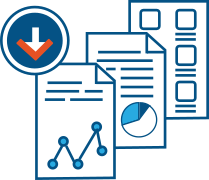The GSA AI Strategy refers to the General Services Administration’s agency-wide approach to researching, adopting, and integrating artificial intelligence (AI) into federal procurement, acquisition management, and operational efficiency initiatives. The strategy is aligned with broader federal efforts to modernize government services, improve data-driven decision-making, and reduce administrative burden through automation.
GSA’s AI Strategy is both technological and procedural — encompassing the development of AI-powered tools, the modernization of acquisition workflows, ethical governance frameworks, and workforce training to prepare agency personnel for AI-augmented environments.
Strategic Objectives
The GSA AI Strategy is guided by the following core objectives:
- Streamline procurement workflows by automating repetitive and data-heavy acquisition tasks
- Improve decision quality through predictive analytics, natural language processing, and machine learning
- Enhance transparency and compliance using AI-based risk detection and contract review tools
- Reduce administrative burden for contracting officers, vendors, and program staff
- Enable smarter government-wide buying strategies with AI-driven category management insights
These goals position GSA as a leader in responsible AI adoption within federal acquisition, while also supporting government-wide mandates such as Executive Orders on artificial intelligence, digital transformation, and responsible automation.
Tools and Technologies Within the Strategy
GSA’s AI Strategy includes the development, piloting, and deployment of specific AI-enabled tools to support acquisition professionals. Notable systems include:
CODY (Contracting Officer’s Decision Yard)
CODY is an AI-powered platform that assists contracting officers during the pre-award evaluation process. It automates proposal reviews, flags compliance issues, and drafts evaluation reports — helping staff make faster, more accurate award decisions.
ML-Based Price and Market Intelligence Tools
GSA is developing machine learning models to analyze historical pricing data, vendor quotes, and catalog information to generate real-time price reasonableness assessments and identify outliers.
Natural Language Processing (NLP) for Solicitation Analysis
GSA leverages NLP to interpret and categorize solicitation documents, enabling faster classification, trend analysis, and opportunity identification.
AI-Driven Contract Risk Detection
AI algorithms are used to detect risk signals in contractor performance, past modification patterns, and financial health — allowing proactive oversight and audit readiness.
Data Normalization and Entity Matching
Machine learning tools help GSA unify supplier data across multiple systems by recognizing and merging duplicate entries, matching UEI numbers, and standardizing business profiles.
Workforce Enablement and Policy Alignment
In addition to the technology layer, the GSA AI Strategy emphasizes:
- Training and upskilling for acquisition professionals in AI-assisted tools and digital literacy
- Cross-functional collaboration between IT, procurement, legal, and policy teams to ensure AI tools are integrated effectively and ethically
- Compliance with federal AI guidelines, including NIST AI Risk Management Framework, OMB guidance, and the AI Bill of Rights
- Transparent reporting on AI outcomes, performance, and governance
GSA is also helping other agencies develop their own AI strategies through its Technology Transformation Services (TTS) and AI Community of Practice (CoP).
Alignment with Broader Government Priorities
GSA’s approach to AI integration supports multiple overarching federal priorities:
- Executive Order 14110 on Safe, Secure, and Trustworthy AI
- OMB’s Federal AI Use Case Inventory Requirements
- The President’s Management Agenda (PMA), particularly around digital modernization and smarter use of data
- Category Management and Spend Under Management (SUM) strategies that benefit from AI-enabled insights
Through this alignment, GSA ensures that AI adoption not only drives operational improvements but also supports government-wide consistency, accountability, and risk mitigation.
Implications for Contractors
As AI becomes more deeply embedded in GSA operations, contractors can expect:
- Faster review cycles for proposals and catalog modifications
- Increased transparency in evaluation criteria and pricing comparisons
- Greater scrutiny via automated compliance checks and risk scoring
- Potential for integration into AI-driven eProcurement ecosystems
Contractors should ensure their submissions are complete, structured, and compliant — AI tools are less tolerant of ambiguity or missing data. Additionally, vendors offering AI solutions may find increased opportunity as GSA expands its technology portfolio.
Conclusion
The GSA AI Strategy represents a forward-looking framework for integrating artificial intelligence into the heart of federal procurement and acquisition management. Through tools like CODY, market intelligence systems, and policy-driven governance models, GSA is setting the standard for responsible, efficient, and scalable AI use in government operations. Contractors and agencies alike will benefit from faster processes, smarter decisions, and a more agile federal procurement landscape.


